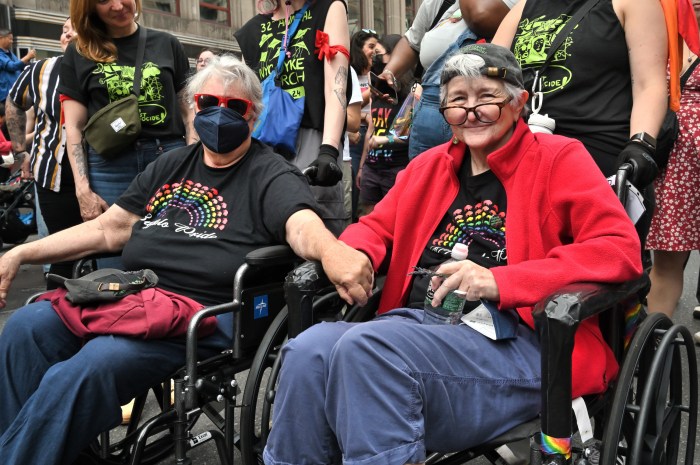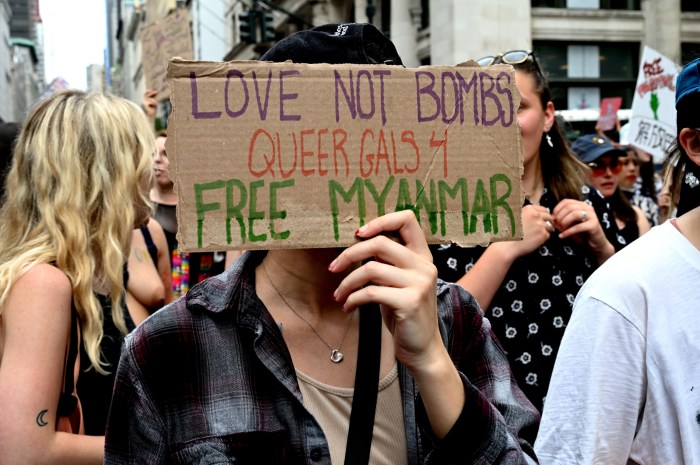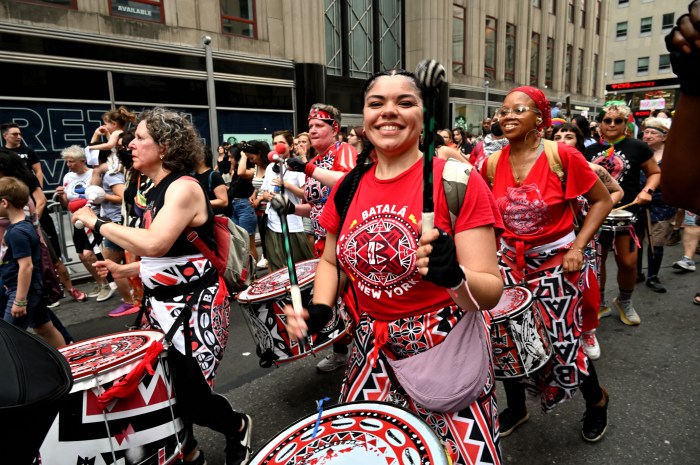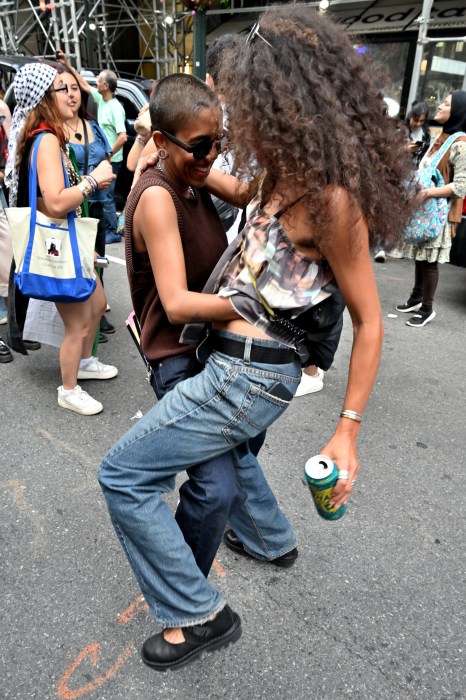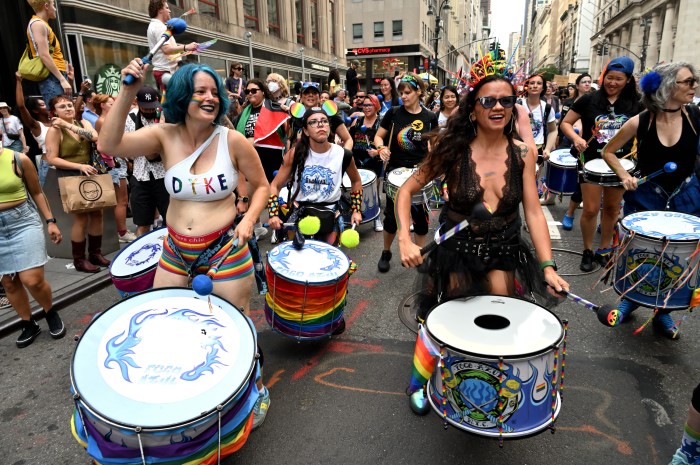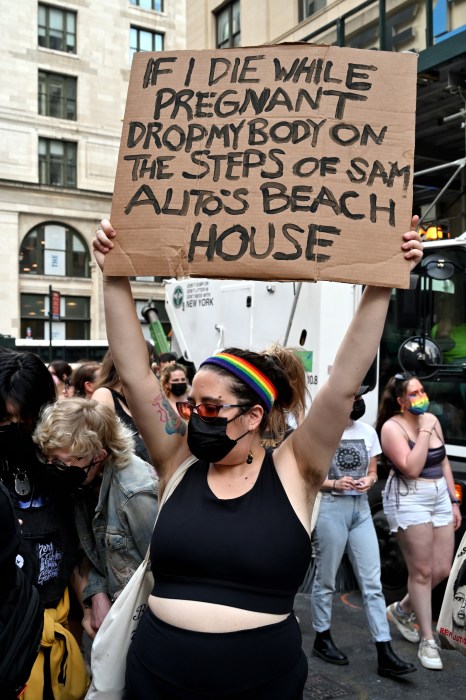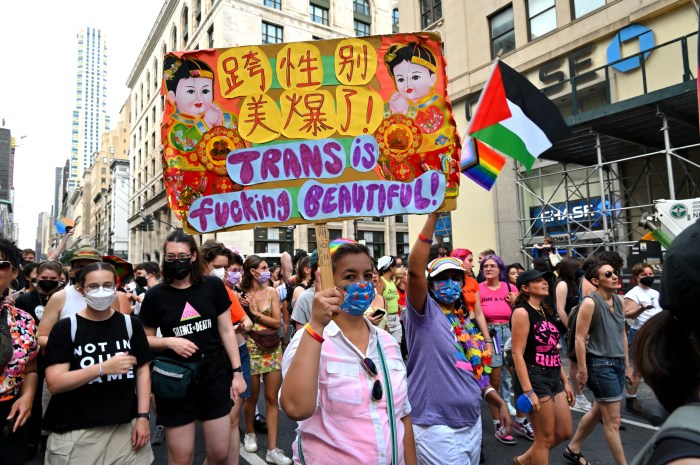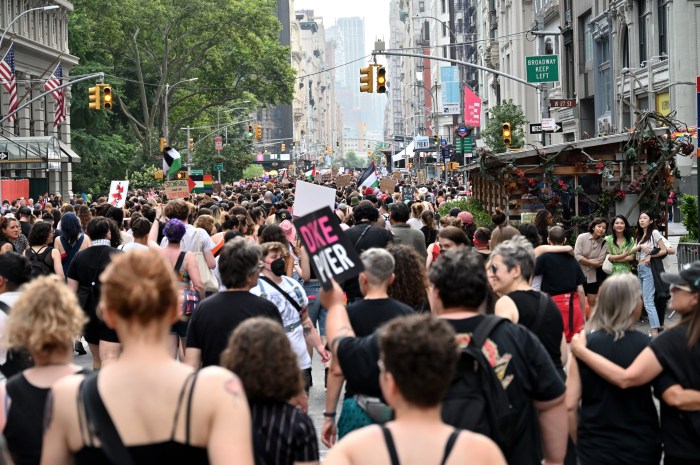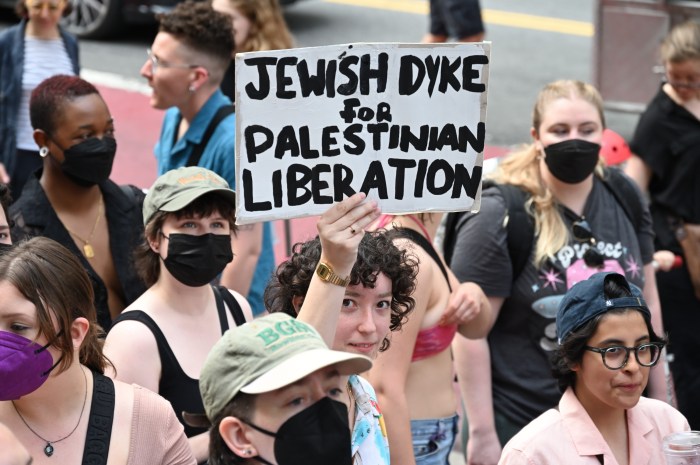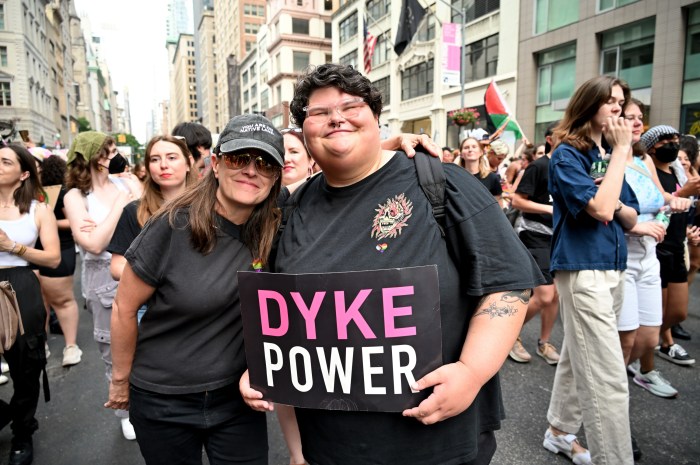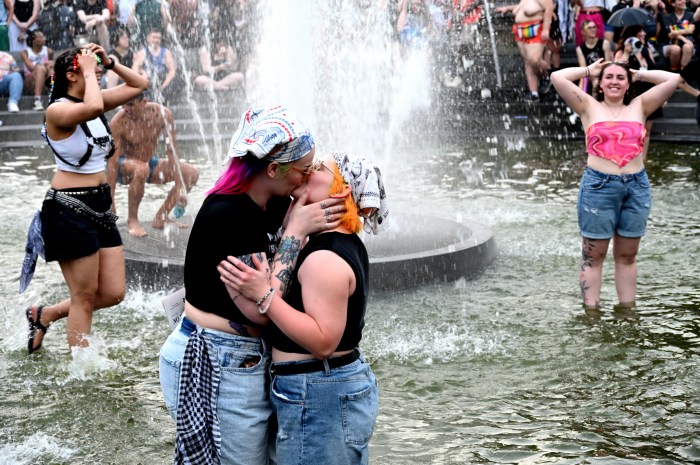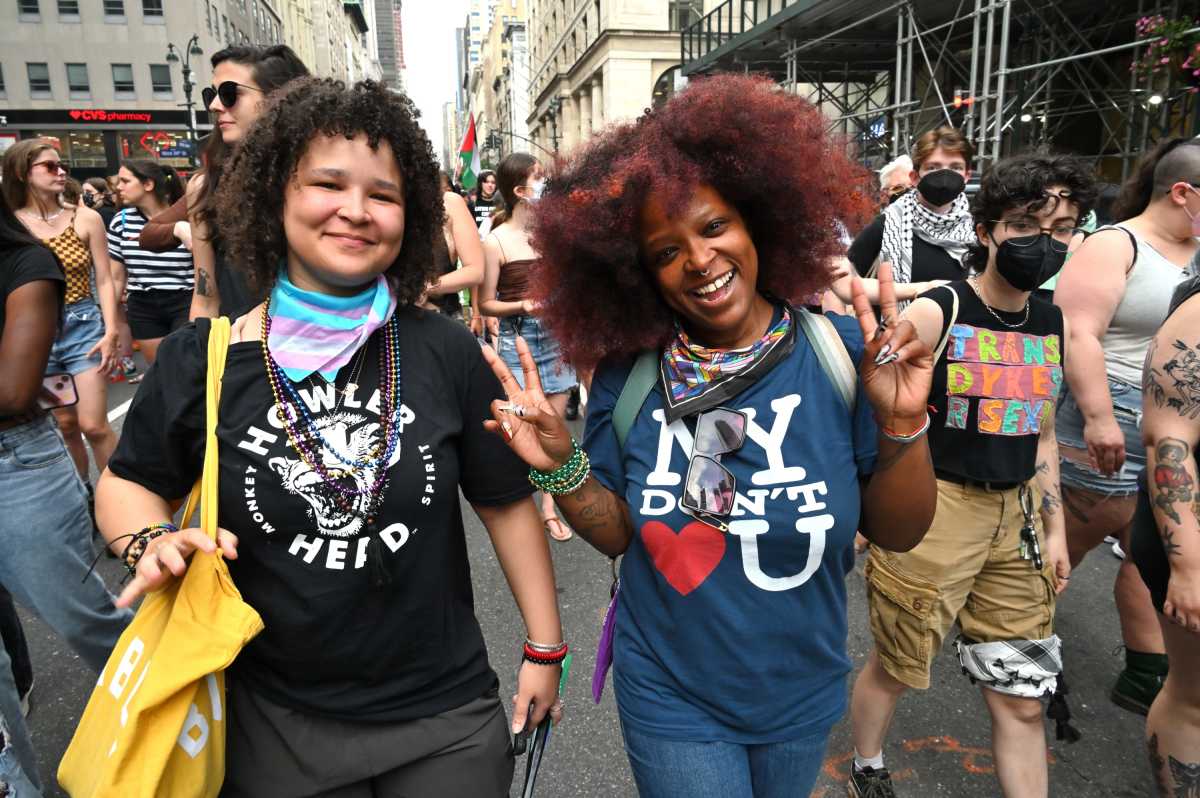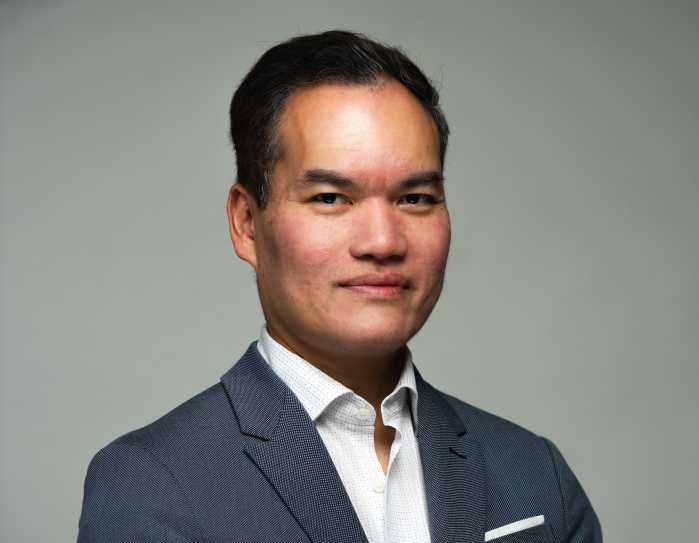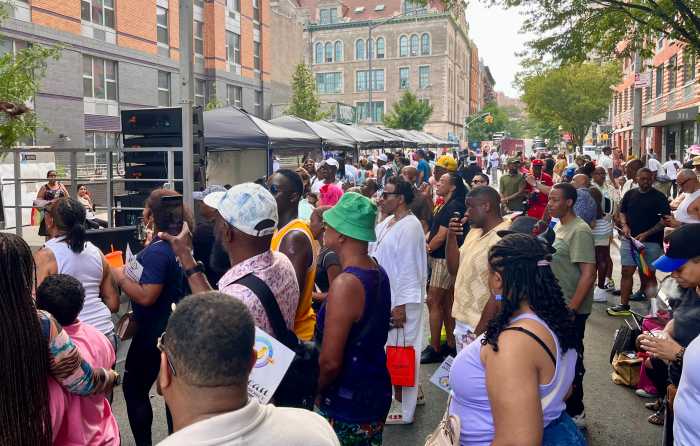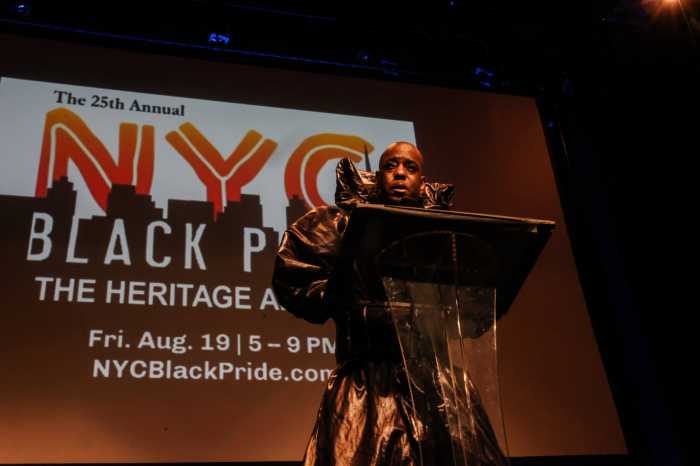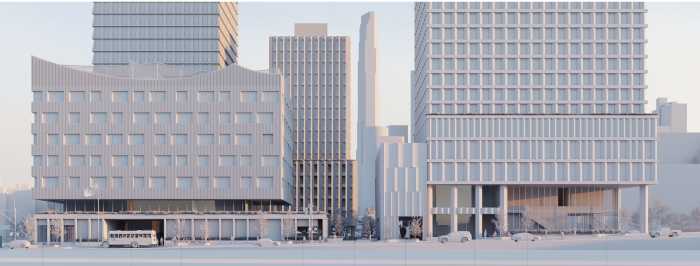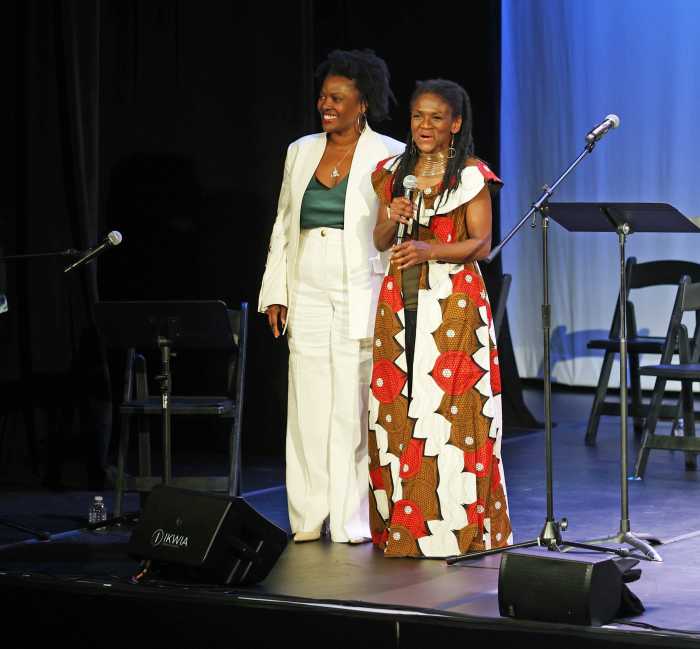Thousands filled the streets of Fifth Avenue on June 29 for New York City’s 32nd annual Dyke March, which went from Bryant Park to Washington Square and highlighted themes of celebration and protest.
Amid the war in Palestine and violence in other parts of the world, this year’s cause was “Dykes Against Genocide.” New York City Pride has its own roots in protest, but while many other Pride events today are now seen principally as a parade or a celebration of the queer community, the Dyke March has maintained a tradition of activism, with its website clearly stating it is “a protest march, not a parade.”
As demonstrators gathered in Bryant Park to lead the trek, the crowd was energized by the celebration of their community and by their solidarity for those suffering from oppression in the face of violence in many parts of the world, including the Democratic Republic of the Congo, Haiti, Myanmar, Palestine, Sudan, and Ukraine, among other places, according to the NYC Dyke March’s website.
One marcher, Michelle Maccarone, described this as a natural pairing.
“I think oppression of people and the systematic annihilation of people is something that the queer community has had to face time and time again,” Maccarone said. “So I think it’s important that there’s solidarity in seeing that abroad and seeing that in history — what our roots are and where our future is.”
As the crowd marched down Fifth Avenue, dykes clad in bra tops and keffiyehs waved Rainbow Flags and chanted recognizable choruses like “Free, free Palestine,” while hand-painted signs declared support for the cause with slogans like “No Pride in Genocide” and “Liberation for All.”
Groups waited all along Fifth Avenue for the march to reach them, growing bigger as strangers pooled together with their fellow dykes, recognizing them by their signs or colorful face paint. A group formed outside a CVS on 14th Street to decorate new friends with glitter and rainbow stamps. For some, it was their first time at the march, but Jaime Moskowitz, one of the women doling out glitter, was celebrating her third year.
“I come back for the sense of community,” she said. “I think it really reminds and grounds us that pride originally started as a protest. And also as a queer woman, queer femme person, it gives me my smaller community as part of a larger community.”
The March culminated at Washington Square Park, where a crowd of allies awaited. Having reached its destination, the spirit of the march shifted to a full expression of joy and celebration of pride. Protesters dispersed onto the grass or out of the park, with a large crowd gathering around the fountain and dozens hopping into the water to cool off in the spray, wading fully clothed or discarding their tops into the hands of friends. Chappell Roan’s hot girl anthem “HOT TO GO” formed a fitting soundtrack as friends and strangers danced together and celebrated the spirit of their community and activism.
One participant, ramelcy uribe, spoke briefly about the duality of the march as both a protest and a celebration.
“I feel like for Black queer and trans people, we already know how to hold both,” uribe explained. “I’ve learned a lot from my friend here about holding grief with joy, because I feel like it’s already in our culture. It’s already how we relate to each other, it’s how we have to exist in the United States. So I feel like it’s very natural and revolutionary.”
See photos below:
